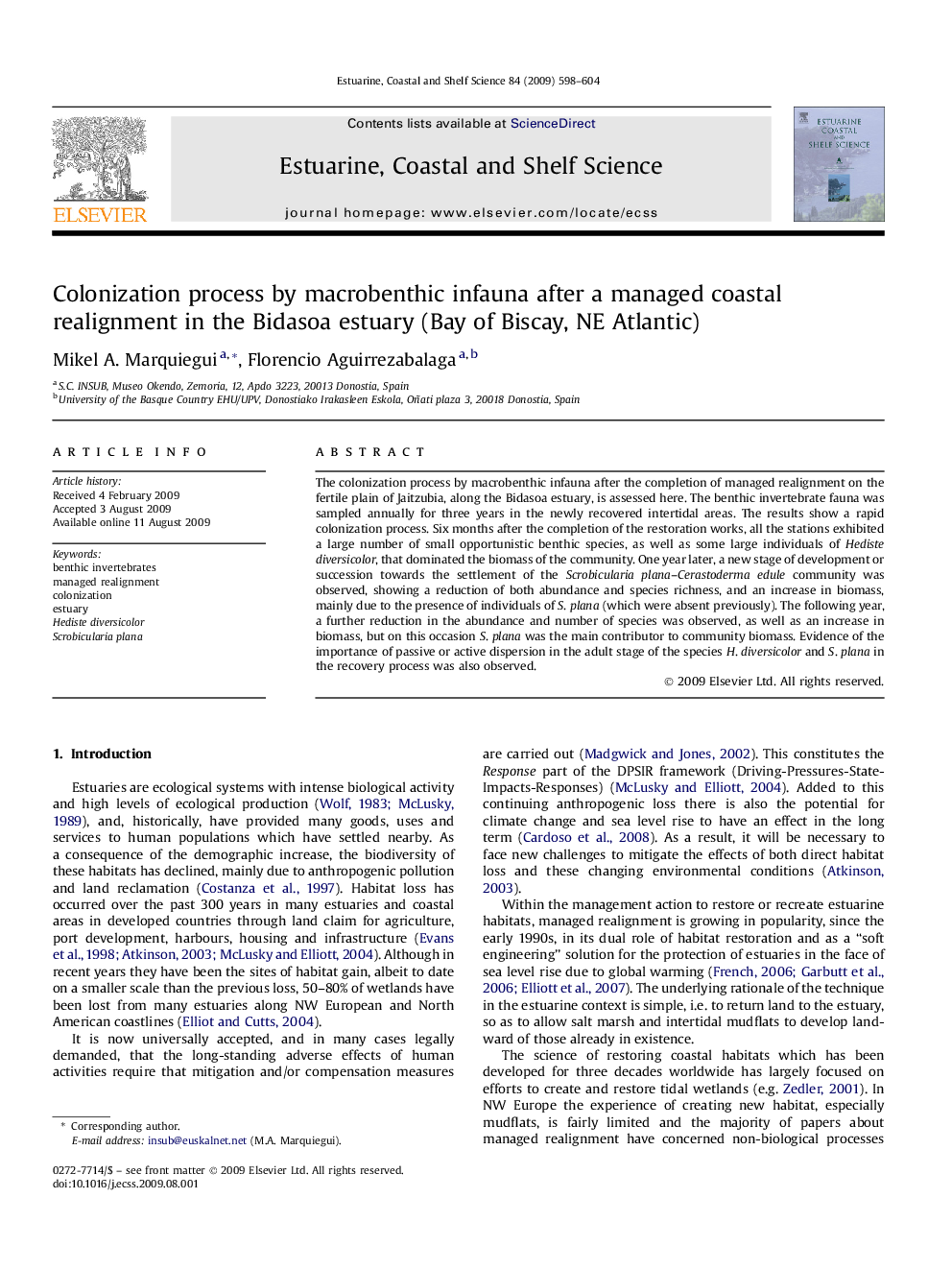| Article ID | Journal | Published Year | Pages | File Type |
|---|---|---|---|---|
| 4541185 | Estuarine, Coastal and Shelf Science | 2009 | 7 Pages |
The colonization process by macrobenthic infauna after the completion of managed realignment on the fertile plain of Jaitzubia, along the Bidasoa estuary, is assessed here. The benthic invertebrate fauna was sampled annually for three years in the newly recovered intertidal areas. The results show a rapid colonization process. Six months after the completion of the restoration works, all the stations exhibited a large number of small opportunistic benthic species, as well as some large individuals of Hediste diversicolor, that dominated the biomass of the community. One year later, a new stage of development or succession towards the settlement of the Scrobicularia plana–Cerastoderma edule community was observed, showing a reduction of both abundance and species richness, and an increase in biomass, mainly due to the presence of individuals of S. plana (which were absent previously). The following year, a further reduction in the abundance and number of species was observed, as well as an increase in biomass, but on this occasion S. plana was the main contributor to community biomass. Evidence of the importance of passive or active dispersion in the adult stage of the species H. diversicolor and S. plana in the recovery process was also observed.
